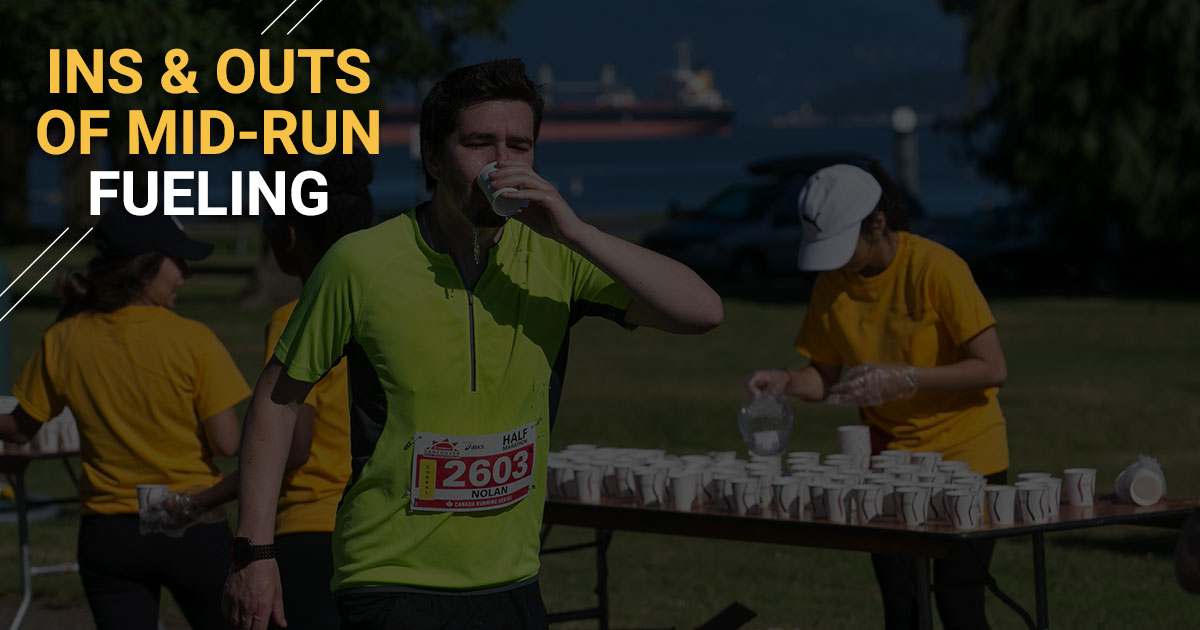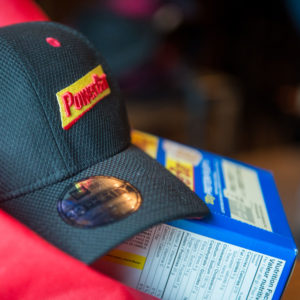
As the distances increase in both training and racing, it’s important to understand the ins and outs of fueling on the run. The advancements in sports nutrition have helped create the number of products available to help fuel our working muscles mid-run. Every runner handles fuel differently, from the amount they can consume, to the type of product, to the flavour that sits best in their gut. It’s all about trial and error, mixed with the science of what one’s “optimal” fueling strategy is.
There is a myriad of choices for running fuel. With every flavour imaginable, runners can choose from a variety of energy gels, chews, drinks, and everyday foods to help them on the run. By ingesting some form of carbohydrate, the primary fuel source for working muscles, it helps to replenish depleted glycogen/calories while on the move. There is a limited amount of stored carbohydrates in our muscles, even after carb-loading effectively. Companies that specialize in fueling such as PowerBar, have invested an inordinate amount of time and research into developing products that can equip an athlete with the resources that they need in training and races. Creating products such as endurance fuel like PowerGels and Gel Blast chews, to pre-workout energy bars, and post-workout protein bars, there’s a product that can help to refuel your working muscles at any point of your training.
Due to the lag in absorption time, it’s not as simple as taking a gel and having it instantly fuel and replenish fatiguing muscles. It takes a bit of time to be digested, absorbed into the blood stream, then delivered to your muscles, so the timing of fuel intake is crucial. Our brains are fueled by glucose in the blood, so when we ingest a gel, we give our brain an “instant” boost to clear any haziness that occurs when our stores are low.
The frequency at which we can take gels is very individual and depends primarily on our stomach’s reaction to the ingested sugars. When racing, the body is working hard to sustain your exertion, so it diverts blood away from the digestive system as your working muscles need it more. By taking gels early in the race before you really need them, you will allow the stomach to digest and transport the glucose to your muscles before it rebels completely. Most products suggest taking a gel every 45-60 mins during exercise. Avoid taking more than one gel at a time as it can spike your blood glucose and leave you feeling sick from too much sugar.
Throughout your training, try to practice a fueling strategy as often as possible. The stomach/digestive tract, just like any other muscle in your body, can be trained. The more often you use gels and force your stomach to handle the digestion and distribution of sugar while on the run, the less likely it’ll be that you have GI distress come race day.
Other important notes:
- Always have water with your gels/chews/etc. It will help dilute the sugar enough to make it easier for the gut to digest and absorb into your system.
- Prone to stomach problems? Instead of taking a full gel every 45-60 mins, try taking a 1/4 of a gel every 20 mins instead.
- Using natural food works too. Use homemade staples like dried fruit, baby food pouches, gummy candies, or honey.
- Can’t eat and run? Opt for a sports drink: something like Gatorade is great, just be sure to have the proper ratio of glucose/fructose and some electrolytes to keep everything balanced.

Win a PowerBar prize pack!
If you’re running the Scotiabank Vancouver Half-Marathon on June 25, there will be stations with water and Gatorade located every 2-3km along the course, as well as a PowerGel station at approximately 13km.
Want to win some PowerBar product this week? Tag one of your friends in our Facebook or Instagram posts and you’ll be entered to win a race entry for each of you into the Scotiabank Vancouver Half-Marathon and a PowerBar prize package! The draw will take place on May 19th.







